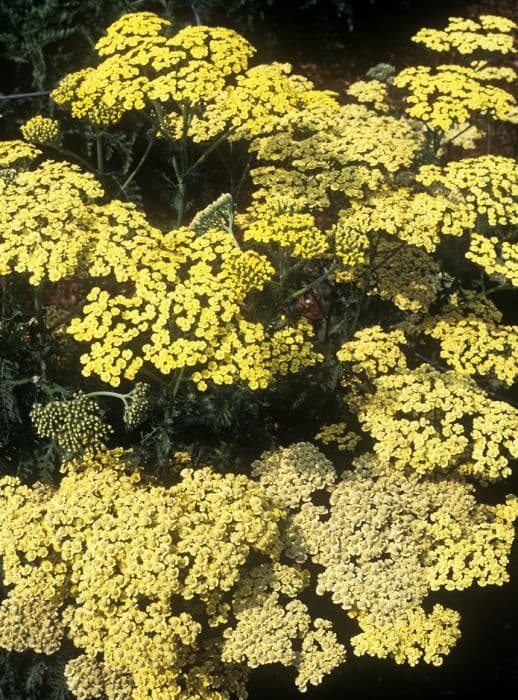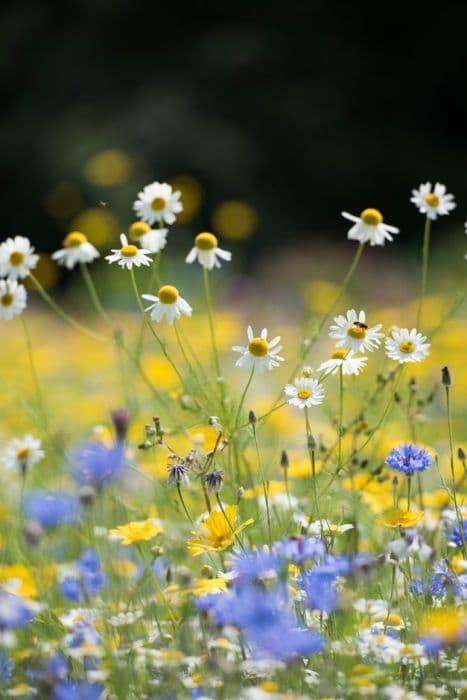Dahlia Dahlia 'Cherubino' (Col)

ABOUT
The Dahlia 'Cherubino' is a strikingly beautiful plant known for its vibrant, showy flowers which are its most defining feature. The blooms exhibit an array of colors, commonly found in rich shades that may include pinks, purples, and whites. Each flower is a spectacular display of petals that can vary from broad and flat to slightly rolled at the edges, often arranged in a layered pattern that adds to the depth and volume of the flower head. The petals themselves demonstrate an ombre effect, with colors that can blend smoothly from the center outwards or present in striking contrasts with bold outlines. The center of each flower is usually a darker shade, drawing the eye inward. This color depth enhances the overall lush appearance of the Dahlia 'Cherubino'. Leaves of this dahlia are typically deep green, providing a lush backdrop that accentuates the colorful display of its flowers. The foliage is composed of leaflets with serrated edges, which may have a slightly glossy appearance and can offer a textural contrast to the softness of the flower petals. Overall, the appearance of the Dahlia 'Cherubino' is one of opulence and radiance, with its pronounced flowers and complementary foliage contributing to its status as a highlight in any garden where it makes its presence. Its blossoms make it a favorite not only for gardeners but also for florists and decorators seeking to add a touch of elegance and drama to arrangements and settings.
About this plant
 Names
NamesFamily
Asteraceae
Synonyms
Garden Dahlia, Dahlia
Common names
Dahlia 'Cherubino' (Col).
 Toxicity
ToxicityTo humans
Dahlias, including the Dahlia 'Cherubino' variety, are not considered toxic to humans. They do not possess poisonous compounds that could cause serious harm if ingested. However, like with any non-edible plant, consuming large quantities may cause mild stomach upset due to being indigestible.
To pets
Dahlias are generally considered non-toxic to pets. The Dahlia 'Cherubino' is not known to cause poisoning in pets such as dogs and cats. However, as with humans, ingestion of plant parts may result in mild gastrointestinal discomfort, such as vomiting or diarrhea, mainly if eaten in large amounts due to the plant materials not being part of the animal’s typical diet.
 Characteristics
CharacteristicsLife cycle
Perennials
Foliage type
Deciduous
Color of leaves
Green
Flower color
Varies
Height
4-5 feet (1.2-1.5 meters)
Spread
2-3 feet (0.6-0.9 meters)
Plant type
Bulb
Hardiness zones
8-10
Native area
Mexico
Benefits
 General Benefits
General Benefits- Colorful Blooms - Dahlia 'Cherubino' produces vibrant, eye-catching flowers that can be a central feature in any garden.
- Extended Flowering Period - Dahlias generally have a long flowering season, from midsummer through to the first frosts, providing ongoing splashes of color.
- Attract Pollinators - The flowers of the Dahlia 'Cherubino' attract bees, butterflies, and other pollinating insects, supporting biodiversity.
- Decorative Cut Flowers - The blooms of Dahlias make for excellent cut flowers, adding a touch of elegance to any bouquet.
- Variety of Uses - Can be used in borders, as bedding plants, or in containers, offering versatility in landscape design.
- Can be Grown as Annual or Perennial - Depending on the climate, Dahlias can be grown either as annuals or lifted and stored for replanting the following year.
- Easy to Grow - Dahlias are relatively easy to cultivate, making them suitable for gardeners of all skill levels.
 Medical Properties
Medical PropertiesThis plant is not used for medical purposes.
 Air-purifying Qualities
Air-purifying QualitiesThis plant is not specifically known for air purifying qualities.
 Other Uses
Other Uses- Photography Subjects: Dahlias like 'Cherubino' are popular among photographers for their vibrant colors and intricate petal patterns, making them excellent subjects for macro photography.
- Natural Fabric Dyes: The petals of the Dahlia can be used to create natural fabric dyes, offering a range of colors from the flower's palette for use in textile projects.
- Eco-Friendly Confetti: Dried Dahlia petals can serve as biodegradable confetti for outdoor celebrations, reducing the environmental impact compared to plastic confetti.
- Artistic Inspiration: The unique form and color of Dahlia flowers can inspire artists and be used as a reference for paintings, drawings, and other forms of art.
- Edible Decoration: Dahlia petals, which are edible, can be used as a decorative and colorful garnish on cakes and desserts, adding an elegant touch to culinary presentations.
- Bookmark Creation: Pressed Dahlia flowers can be used to create beautiful and unique bookmarks, preserving the beauty of the flower in a functional form.
- Candle Embeds: Dried Dahlia petals can be embedded in homemade candles to add a decorative element and slight natural fragrance as the candle burns.
- Floral Bath Soaks: The soothing colors and mild fragrance of Dahlia petals can be included in homemade floral bath soaks to create a relaxing spa experience.
- Plant Pigment Extract: The vibrant pigments of Dahlia petals can be extracted and used in various DIY craft projects, such as homemade inks or watercolor paints.
- Seed Harvesting for Education: Harvesting seeds from the Dahlia can serve as an educational tool to teach children and gardening enthusiasts about plant reproduction and seed growth.
Interesting Facts
 Feng Shui
Feng ShuiThe Dahlia is not used in Feng Shui practice.
 Zodiac Sign Compitability
Zodiac Sign CompitabilityThe Dahlia is not used in astrology practice.
 Plant Symbolism
Plant Symbolism- Commitment and bond that lasts forever: The dahlia signifies an everlasting union, making it a popular choice for weddings and anniversaries.
- Dignity and elegance: Its sophisticated form makes the dahlia a representation of dignity and elegance, often associated with those who carry themselves with grace.
- Change and diversity: With the numerous varieties and colors, dahlias symbolize diversity and change, appealing to individuals who appreciate varied experiences and growth.
- Creative expression: The vibrant colors and patterns of the dahlia inspire people to embrace their creative side and express themselves uniquely.
- Inner strength: Despite their delicate appearance, dahlias are sturdy flowers that can bloom in challenging environments, representing resilience and inner strength.
 Water
WaterDahlias require regular watering, especially during dry spells. The best method for watering Dahlia 'Cherubino' is to provide a deep soaking at the base of the plant, avoiding wetting the foliage to prevent fungal diseases. Usually, watering once or twice a week with about 1 to 2 gallons of water per plant should suffice, depending on weather conditions. In hotter climates or during peak summer heat, you may need to water more frequently, while in cooler weather, less water is required. Always check the top inch of soil for moisture; if it’s dry, it’s time to water again.
 Light
LightFor optimal growth, Dahlias prefer a spot that receives full sunlight for at least 6 to 8 hours a day. Therefore, plant Dahlia 'Cherubino' in a location in your garden that is exposed to plenty of direct sunlight, ensuring it's not shaded by taller plants or structures. Partial shade is acceptable, particularly in hot climates, where some afternoon shade can help protect the flowers from intense heat.
 Temperature
TemperatureDahlias thrive in moderate temperatures and do not tolerate extreme cold. Dahlia 'Cherubino' performs best in temperatures that range from 60 to 70 degrees Fahrenheit. The plant can survive in temperatures as low as the upper 20s Fahrenheit but must be protected from frost, which can damage or kill the plant.
 Pruning
PruningPruning Dahlias, like 'Cherubino', involves deadheading spent flowers to encourage more blooms and maintain plant vigor. Cut the stem back to the next set of leaves to promote new growth. Pruning should be done when flowers fade throughout the blooming season, which is generally from midsummer until fall. The best time to prune is in the morning when the plant is well-hydrated.
 Cleaning
CleaningAs needed
 Soil
SoilDahlias favor a well-draining and fertile soil mix with an optimal pH range of 6.5 to 7.0. An ideal soil recipe for Dahlia 'Cherubino' would include equal parts garden soil, peat moss, and perlite or coarse sand to enhance drainage. Organic compost can also be added to provide essential nutrients.
 Repotting
RepottingDahlias typically need to be repotted every year. Dahlia 'Cherubino' should be lifted and divided annually, preferably in the spring, to maintain vigor and flower production. Replant the tubers in fresh soil at this time.
 Humidity & Misting
Humidity & MistingDahlias thrive in moderate humidity conditions but do not require an overly humid environment. For Dahlia 'Cherubino', aim to keep the surrounding humidity at a consistent level, avoiding the extremes of arid or overly moist air.
 Suitable locations
Suitable locationsIndoor
Provide bright light, well-draining soil, and moderate water.
Outdoor
Place in full sun with fertile soil, deadhead for blooms.
Hardiness zone
8-11 USDA
 Life cycle
Life cycleThe life cycle of Dahlia 'Cherubino' begins with seed germination or vegetative propagation through tubers, where the plant establishes its roots and sprouts foliage. The vegetative stage is marked by the growth of stems and leaves as the plant develops its structure and photosynthetic capability. The Dahlia then enters the budding stage, where flower buds form and prepare to bloom. The blooming stage follows, showcasing the plant's vibrant flowers that attract pollinators and may last until the first frosts of fall. After flowering, Dahlia 'Cherubino' enters a period of senescence where leaves might wilt and die back, especially as temperatures drop. The tubers then go dormant over winter, storing energy for the next growing season when the cycle recommences.
 Propogation
PropogationPropogation time
Spring-Early Summer
The most popular method for propagating Dahlia 'Cherubino' is by dividing tubers, which is typically done in the spring as the soil begins to warm up. To propagate through division, carefully dig up the clumps of tubers after the foliage has been killed by frost in the fall, and store them in a cool, dry place over the winter. Prior to planting in the spring, each clump should be cut into pieces that have at least one eye, using a clean and sharp knife. The cut surface can be dusted with a fungicide to prevent rot. The divided tubers should then be planted about 4-6 inches (10-15 centimeters) deep, spacing them about 18-24 inches (45-60 centimeters) apart to allow for optimal growth.









